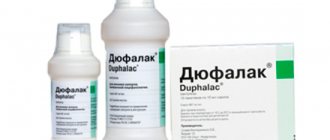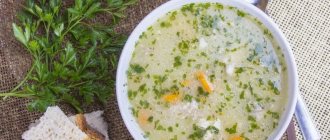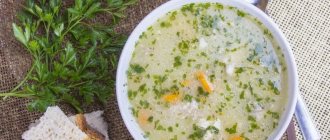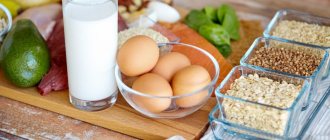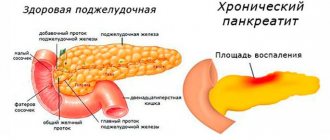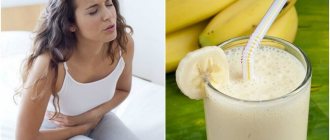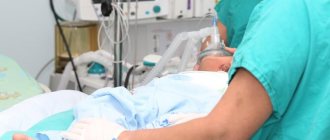What can serve as the best argument in favor of this or that survey, no matter how sad the statistics. In Russia, among all cancers leading to death, colon and rectal cancer is one of the leaders. And mainly because people are in no hurry to check their intestines - out of ignorance, out of embarrassment or fear. Doctors assure that in 95% of cases the pathology could have been avoided by noticing the signs of an incipient tumor in time. This can be done during a colonoscopy.
What is a colonoscopy and who is it for?
Colonoscopy is a way to examine the large intestine, assess its condition, diagnose inflammation, polyps, cancer and begin timely treatment. This examination is carried out using a special flexible instrument - a colonoscope.
During an intestinal colonoscopy, the following is assessed:
- condition of the mucous membrane;
- the presence of formations (polyps, tumors), erosions and ulcers;
- structure of the vascular pattern;
- anatomical features: diverticula, lengthening of the colon, additional loops of the sigmoid colon, etc.
In some cases, colonoscopy is a mandatory examination. In particular, if there is a suspicion of a tumor in the intestine, if the patient suffers from Crohn's disease, ulcerative colitis, or intestinal obstruction. Colonoscopy is also indicated for bleeding from the intestines and if there is a suspicion that there is a foreign object in it.
Authorized products
After a colonoscopy, foods based on easy-to-digest foods are allowed:
- Soups based on broths made from vegetables, lean fish (cod, flounder, pollock, tuna, halibut, blue whiting, mullet, trout), poultry (chicken, turkey);
- Boiled egg, soft-boiled, omelette cooked in a steam bath;
- Boiled fish of lean varieties;
- Fish cooked using a steam bath;
- Porridge made from oatmeal, rice, buckwheat, semolina, without milk;
- Fresh, stewed, boiled, steamed vegetables;
- Curds, kefir, yogurt, fermented baked milk;
- Soaked dried fruits;
- Rosehip infusion, herbal teas, compotes, jelly;
- Marshmallows, marmalade, honey;
- Grain, rye bread.
Types of colonoscopy
It is conventionally divided into diagnostic and therapeutic.
Diagnostic colonoscopy is an examination whose purpose is to identify or exclude diseases, for example, colitis, including nonspecific ulcerative colitis, Crohn's disease, diverticula, cancer and other ailments.
Therapeutic colonoscopy involves not just a visual examination, but also the removal of tumors and foreign bodies.
In the list of endoscopic procedures you can also see the words “ fibrocolonoscopy ” and “ video colonoscopy ”. They are variants of the same colonoscopy, just the equipment is slightly different. The first uses a fiber colonoscope, a more flexible device that contains heavy-duty optical fibers, and the second uses a video colonoscope. It allows you to examine the colon in detail using a video stand at multiple magnifications, perform a high-quality biopsy and safe polypectomy (removal of a colon polyp), and also reduce the percentage of diagnostic inaccuracies.
To the point
How to treat hemorrhoids in men: pills, diet or surgery
In general, all these procedures are the same. The patient removes everything below the waist, lies on his left side and bends his knees under him. The specialist carefully inserts a thin tube through the anus into the intestines and slowly moves along it. At the same time, a weak air stream is supplied so that the intestines straighten and the condition of its walls can be seen. At the end of the device there is a camera with which you can take photos and videos of damaged areas of the intestine.
Today, colonoscopy can be performed while you sleep. A person is given an injection, he falls asleep and voila – he wakes up after the procedure to hear the doctor’s verdict. This is a wonderful opportunity for those who are afraid of such manipulation or have had a negative experience before (the procedure was done rudely and unprofessionally).
Prohibited Products
Excluded from food:
- Fried meat products, fish;
- Sausages, canned products, smoked meat, pickles, marinades;
- Whole grain porridge;
- Lentils, chickpeas, beans, peas, rice;
- Confectionery;
- Bakery;
- Pasta;
- Radish, radish, onion, garlic;
- Mushrooms in any form;
- Fried egg;
- Freshly ground coffee;
- Products containing cocoa beans;
- Alcohol;
- Spicy, fatty dishes.
Preparing for intestinal colonoscopy
Preparing for a colonoscopy involves two steps: diet and oral lavage.
So, diet. It must be followed in order to prepare the intestines for the procedure. You should eat low-fiber foods for three days before the procedure.
It is recommended to exclude from the diet:
- Raw vegetables and fruits, as well as, for example, yoghurts with pieces of fruit.
- Carbonated drinks, especially those containing dyes.
- Nuts and seeds, as well as products containing them - grain bread, cookies, yoghurts.
- Coarse types of bread (rye and rye-wheat), freshly baked yeast bread.
- Milk.
- Sausages.
- Bean products.
- Greenery.
- Seafood.
What can you eat?
Proteins should prevail in food, so lean meat is encouraged - chicken, beef, veal. Peeled potatoes, eggs, pasta, cheese, semolina and oatmeal are also allowed.
On the first and second days, you can consume small amounts of soft cottage cheese and fermented milk products (kefir, plain yogurt, sour cream). Broths may be present on the table (preferably poultry, veal, fish, vegetable). Drinks allowed are pure water, weak tea, and liquids without dyes (especially without red, blue and purple). For sweets, you can eat sugar, honey, marmalade, marshmallows, and chocolate.
Good to know
How to reduce the risk of developing hemorrhoids during pregnancy?
In addition, 2-3 days before the start of preparation, medications containing iron should be discontinued. You must stop taking all liquids 4 hours before the test.
Intestinal lavage
For a successful examination, you need to try to cleanse the colon of feces as much as possible. Intestinal lavage is its washing - another stage of preparation for a colonoscopy. For rinsing, doctors recommend taking isoosmotic solutions that pass through the intestines without being absorbed and without disturbing the water-electrolyte balance. They are used on the eve of the procedure - how exactly depends on the chosen product.
Ideally, it is prescribed by a doctor, because he knows the patient’s medical history, concomitant systemic diseases and can take into account contraindications and possible side effects.
The drug is used either on the day before the examination, if it is scheduled for the morning, or according to a two-day regimen - on the eve of the examination and in the morning on the day of colonoscopy 4-5 hours before, if the examination is carried out around noon, or only in the morning on the day of the examination, if it is scheduled for afternoon.
Additional funds
Together with the mentioned isosmotic solutions, the following is sometimes used:
- defoamers (for example, Espumisan, Disflatil) - drugs against gas formation in the intestines. They ensure the absence of foamy intestinal secretions, so it becomes easier to examine the condition of the mucous membrane.
show more
- prokinetics (Reglan, Cerucal, Perinorm, etc.) they “force” the intestines to contract, accelerate peristalsis and help reduce bloating in the abdomen.
- laxatives (Regulax, Glaxenna, Pursennid, etc.) in combination with an isosmotic solution also make it possible to better prepare the intestines for examination.
show more
- antispasmodics (No-shpa, Decitel, Meteospasmil) are recommended to reduce the likelihood of discomfort.
show more
Diet with menu
Day 1
Breakfast : two-egg omelette with white bread toast with butter, dried fruit compote without pulp. Lunch : boiled potatoes and baked chicken, tea with marshmallows or marmalade Dinner : boiled fish with white rice, unsweetened jelly without pieces of berries and fruits Between meals : a glass of kefir
Day 2
Breakfast: rice porridge, sandwich with cheese, green tea with honey Lunch: pasta with chicken cutlet, tea with a piece of chocolate Dinner : low-fat cottage cheese - maybe with a spoonful of honey, a glass of kefir Between meals : kefir or low-fat yogurt without additives
Day 3
If your colonoscopy is scheduled for tomorrow, 8.00-10.00
Breakfast: semolina porridge, white bread sandwich with cheese/butter, weak tea with a piece of chocolate. Lunch and dinner: only permitted clear liquids - chicken or vegetable broth, tea, clarified juices.
Day 4
If your colonoscopy is scheduled for tomorrow, 10.00 – 14.00
Breakfast : oatmeal with a piece of white bread and cheese, weak tea with marmalade or honey Lunch : no later than 13:00, you can drink broth and tea with sugar Dinner : only permitted clear liquids - chicken or vegetable broth, tea, clarified juices.
Day 5
If your colonoscopy is scheduled for tomorrow, 14.00 – 19.00
Breakfast: a couple of boiled eggs, a little cottage cheese, weak tea with chocolate or marshmallows Lunch: pasta with boiled/baked chicken without sauce, a white bread sandwich with cheese, a glass of clarified apple juice Dinner: until 18:00, chicken broth
Comments from nutritionists
The diet in preparation for an intestinal examination can be called strict and unbalanced, since it excludes the consumption of sufficient quantities of various foods that provide the body with the necessary amount of energy, proteins, fats, and carbohydrates.
In this regard, many patients in the first days may feel dizzy , general malaise, and experience acute attacks of hunger. To make life as easy as possible during this period, do not allow heavy physical activity and avoid stressful situations. Try to reduce the intensity of work during this period and interrupt sports activities. Do not schedule a colonoscopy during periods of intense brain activity (sessions, presentations at work) that require careful preparation.
Many believe that this “low-slag” diet can be used for other purposes, in particular to cleanse the body of waste and toxins . This is a misconception. This food is intended directly to prepare the intestines for the examination. And the “slagging” of the body must be reduced by other types of diets, in particular, by holding regular (2-3 times a week) fasting days (kefir, vegetable, cottage cheese), as well as special types of body cleansing, for example, a Russian/Finnish bath.
Mistakes during intestinal colonoscopy
Errors during intestinal colonoscopy usually arise due to certain violations in preparing the patient for the procedure.
1. Enemas.
Homemade enemas often do more harm than good. Firstly, if there is damage to the intestinal mucosa, already at the stage of administering an enema there is a risk of injuring it even more. Secondly, at home it is not easy to pour one and a half liters of water into yourself and hold it for several minutes, as expected. In addition, one trip to the toilet is not enough, and not many people are ready to repeat the procedure. As a result, the intestines are not sufficiently cleansed.
2. Failure to follow instructions during preparation.
Each drug prescribed to cleanse the intestines has its own instructions for use: how to dilute, in what quantity, at what intervals to take. All this is written there for a reason, and it is important to familiarize yourself with the dosage regimen in advance and follow it so as not to screw up the examination.
3. Non-compliance with the diet.
For some, even two days on a protein diet is a real challenge. Some patients don’t even really try to follow the diet, they say, take a laxative anyway, why bother? Others hold on, but then break down and eat a kilogram of salad or drink, for example, some red soda. And then the specialist will think about what these reddish spots in the intestines are, is it blood?
4. Untreated constipation.
If this problem occurs, you need to adjust your preparation plan for colonoscopy. So, people with constipation need to start a diet earlier - about 5 days before a colonoscopy. In addition, you need to take laxatives in advance, at least a week before the procedure, and follow a drinking regime.
Quitting the diet
You need to exit a slag-free diet correctly so as not to harm your health. The release lasts about a week. If you do not follow the recommendations presented, there is a high probability of developing constipation and the formation of fecal stones. There is even a risk that a person will develop an intestinal obstruction. In order for the body to smoothly adapt to its usual diet, you need to introduce one product from the list of prohibited foods into it every day. First, a person should eat vegetables, fruits and cereals, and then you can add black bread, fried and fatty foods.
It is important to continue to drink enough water during this time so that the intestinal microflora recovers faster; it is recommended to take probiotics, which help improve food digestion processes.



